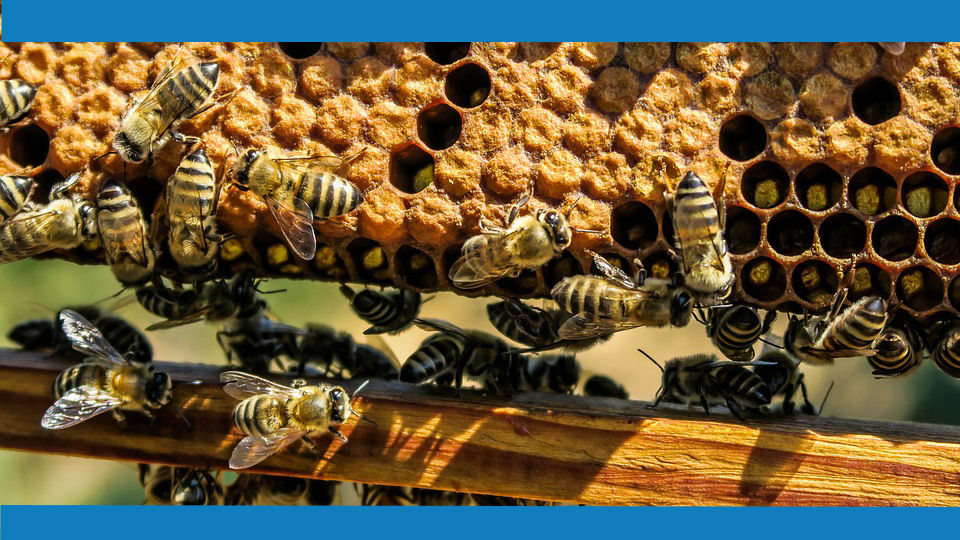Imagine striking up a conversation about energy & better utilities resource use with a colleague at work, or with one of your customers, or with your team or department. Imagine them eager and passionate about what needs to be done. Imagine their enthusiasm creating a buzz within your organization.
This is the first of our two checklists on Engagement Actions. Use it to think about which of the following techniques best support your activities to engage colleagues and develop hearts and minds to make connections to achieve the ‘Win Win’:
The 25 suggested actions are divided up across the Big Green Challenge 5-R categories: Review, Reduce, Reuse, Recycle, Rethink.
REVIEW
The first step to take to understand performance and target savings right away

1. Schedule Energy Time
Schedule regular energy time within your team and governance meetings to allow colleagues to regularly review energy performance against targets and discuss new ideas and actions. This ensures the team maintains its focus on energy and sustainability targets over time and increases the chances of sustained progress.
Energy time works best when reviewed by the whole team during a monthly meeting.
2. Use Team Dashboards and Scorecards
Dashboards are data and information management systems that visually display and monitor energy performance indicators and success measures so the team can review them. Dashboards can be displayed in digital or paper formats. Scorecards present the status and progress against planned actions and overall energy performance of a department, process, or organization. They are customized to meet the specific needs of a team or organization.
Use tools such as dashboards, balanced scorecards or RAG reports (Red, Amber and Green) to help make quicker and better decisions, reinforce behaviors and maintain momentum.
3. Involve Colleagues in Energy Audits
Energy audits are a systematic analysis of energy use and energy consumption within a defined energy audit scope. ISO 50002 specifies the process requirements for carrying out an energy audit in relation to energy performance. The same principles apply to other utilities resource use such as water. The standard methodology is applicable to all types of organizations, and all forms of energy and utilities use.
For a more effective audit, actively involve building users in the process, and consider how their actions and behaviors influence energy performance.
4. Identify Significant Resource Users (SRUs)
SRUs are people who have hands-on control of, or who can significantly influence, energy and other resources use within an area. Identifying SRUs and other stakeholders is quite often key to review energy performance and identify opportunities and priorities for energy performance improvement; it is good practice to take into account attitudes and behaviors of SRUs as they impact on overall sustainability performance.
Use stakeholder mapping tools to define the key roles and persons involved in actions for better resource use. A RACI matrix, for example, is a responsibility chart which shows who is Responsible and Accountable for related activities within an organization, and who should be Consulted and Informed of actions being taken.
5. Discuss Consumption Profiles
For energy-consuming systems, where half-hourly consumption data is available, talk to colleagues about what effect they think they can have on the shape of the daily and weekly consumption profiles. These can be considered along with any other relevant variables which significantly influence consumption; typical variable may include weather, service or production levels.
The impact of activities or behaviors, with respect to resources use, can be captured in consumption profile templates and used as a benchmark to compare future performance against.
REDUCE
Prioritize engagement activities that engage colleagues to reduce consumption of resources.

1. Challenge Time schedules
Most energy consuming systems and equipment in the workplace are set to run automatically to programmable time schedules. When setting time schedules, engineers often have to make assumptions about operational practices and behaviors. As most of us are risk averse, this means that most systems run for much longer than they need to. Work with local operators (who best understand local service requirements), review and challenge the operating hours of all equipment and systems that consume significant utilities use.
Reduce times schedules in partnership with local users. Reducing operating times by 1 hour a day can reduce consumption by 5% or more.
2. Just Do It
‘Just do it’ (JDI) is a proven easy to remember, convincing and motivational mantra to stimulate colleagues to make quick low risk actions. Why wait to do something if it’s the right thing to do and it can be done now? This helps to make actions quick and intuitive for everyday champions involved; procrastination is often the main reason for little or no achievement.
A JDI mantra needs to be positioned alongside your other rapid actions processes. Champions need be able to distinguish between ideas and actions they can act on individually and those with greater risk that require team discussions, consensus or management approval.
3. Start a 100-day challenge
A one-hundred-day-challenge is a useful framework to create a sense of urgency to help teams focus on a particular challenge, and break down barriers, to see what they can achieve in a fixed timeframe. 100 days is typically the time it takes to break and remake habits. The results achieved through collaboration are often outstanding.
Set a 100-day plan upfront which brings the team together focused on the task. Encourage teams to share ideas and remember to celebrate success.
4. Nudge Colleagues
Nudge theory uses positive reinforcement to influence behaviors. It can help people review their existing behaviors, target obstructive ones to correct them, or create new habits. People like to make fast, effortless and emotionally charged decisions; nudge interventions are typically indirect, free of choice, respectful, positive and about self-discovery.
Guide colleagues to make the more sustainable decision by making the better option more easily available and attractive to do.
5. Organize Collaborative Workshops or Events
Workshops and events are great opportunities to bring colleagues together to develop awareness, instill desire, enhance capabilities, and create the green sparks needed to kick-start change.
Organize Big Green events to create these connections, raise people’s spirits, improve collaboration, boost motivation and identify and act on quick wins – these are all often key ingredients for successful and long-lasting performance improvement programs.
REUSE
Once reduction interventions are in place, reinforce actions with interventions that enhance ability.

1. Start a Competition
Competitions are proven to be powerful tools in influencing peoples’ behaviors. In fact, competition drives peoples’ motivation pulling on our human natural desire to compete and to compare performances. Competition helps drive continual improvement through innovation, enhanced quality, better knowledge and motivation.
Organize competitions involving teams from different operating areas to improve performance and strengthen team building.
2. Run Awareness Campaigns
Use awareness campaigns to communicate key issues, solutions and benefits to everyone across the organization to enhance their knowledge and understanding. Regardless of the channels used (champions, guides, toolbox talks, posters, videos, etc.), it is important to frame the messages well. Evidence suggests targeted information passed on by colleagues is likely to be more effective than general information provided through printed material such as posters and stickers. It is a common mistake to think awareness campaigns alone change behaviors; for them to work, they need to be part of an integrated approach.
Run an awareness campaign to engage and educate colleagues and reinforce hearts and minds on energy and sustainability topics.
3. Toolkits
Tools and toolkits support everyday champions to make it easier to break down barriers and overcome challenges to deliver action at scale. Rapid action processes help colleagues quickly implement standard operating procedures and, if appropriate, develop their own local solutions. Smart phone or web apps can use process or social networking to help connect activities; take care when using in-house only systems as they can alienate any external members of the team.
Put in place a toolkit that makes implementing actions easier for colleagues.
4. Challenge for Sustainable Habits
The way significant resource users (SRUs) conduct work has a strong effect on energy consumption and waste production. The 21/90 rule is one popular method that can help SRUs build new habits: someone commits to a personal or professional change in activity for 21 straight days then, once they've established the habit, continue to do it for another 90 days for it to become a way of life.
Encourage colleagues to form new, more sustainable habits. Use communications to promote good actions that colleagues and opinion leaders take.
5. Create Checklists
If developed well, checklists are one of the easiest ways to stimulate ideas, enhance knowledge and facilitate quick action for champions. Break down a task into smaller chunks or objectives, assign each person one or more tasks they can focus on, and enjoy the satisfaction of checking off the list the completed actions.
Create your own checklists to share with colleagues as a guide with simple ideas and clear instructions. Be careful about using checklists without a good understanding of the whole process.
RECYCLE
Connect colleagues and recycle ideas, actions and feedback to seal change longer-term.

1. Launch Your Program
A high profile launch event led by the CEO or a senior director reinforces the importance of any program. This may involve a short event involving key colleagues, with follow-up communications to catalyze action. Use persuasive techniques or imagery to instill in building users a feeling of responsibility, for example, promoting a “switch it off” campaign. Be careful about solely relying on press releases, posters and print.
For a launch, consider empowering colleagues to use storytelling as an interesting way to engage and persuade others to get involved, without falling into the trap of greenwash or using jargon.
2. Use Online Forums
Online forums provide the opportunity for people to connect and have conversations as part of a community of practice. They can be extremely useful tools to encourage discussion on specific topics of interest, increasing communication and collaboration amongst forum users. Forums are also easy places to go to when seeking new ideas, assistance and support, encouraging anyone to ask for help if needed.
Engage your colleagues by creating your own local community of practice within the workplace. Supplement this by tapping into existing, external forums as appropriate.
3. Lead by example
Studies show that role modelling or using social norms are very effective ways to spread change. Use role modelling to create new better practices. Consider which social norms demonstrate to others good simple behaviors and how colleagues can make a difference.
Be a role model and create social norms for colleagues to aspire to or imitate.
4. Share Case Studies
Sharing case studies both internally, within an organization, or externally through industry networks and clubs, is a great means of discovering new ideas and learning about new ways of doing things to drive continual improvement.
Create your own case studies to record and share lessons and experiences, and demonstrate the results of your activities with colleagues and associates. Draw on external case studies for new ideas.
5. Ask for User Feedback
User feedback is a very effective method to learn about and target important issues that you may not have been aware of. Asking building users for their opinion is also a great way to engage them, and promote good practices. A mix of techniques (events, workshops, questionnaires, interviews) give you a good authentic picture of how your local organization is doing.
Ask about the working environment and your energy and sustainability initiatives, and peoples' motivations and awareness. This feedback can be used to calibrate physical monitoring of the working environment.
RETHINK
Challenge mindsets, look for new ways of doing business and trial new ideas.

1. Introduce Smarter Design Interventions
Use design interventions and environmental restructuring to alter the physical and consequentially social context to enable step changes in energy & sustainability performance. Examples are relocating equipment for easier local control or redesigning workspaces for a better use of natural sunlight or natural ventilation for greater efficiency. This may include use of electronic feedback systems or devices. Note that electronic feedback systems need to be managed carefully as studies show their effectiveness can often easily diminish over time.
Discuss new workplace designs that enhance your ability to continually improve energy & sustainability performance.
2. Realign for the ‘Win Win’
Use the ‘Win Win’ philosophy to target business and personal co-benefits at the same time to make what you’re doing more positive for all the people involved. Psychologists tell us that it’s often the co-benefits that are typically the drivers of success. Therefore we need to find out what motivates people on a personal level; to do this, we can draw the classic motivational theories of Maslow, McGregor or Hertzberg.
Discover our Net Zero ‘Win for All’ philosophy, to help you make sure all stakeholders are engaged and championing better sustainability performance for All.
3. Start Innovation Trials
Innovation trials are frameworks that provide a safe context for people to experiment and try out new ways of doing things, in a managed way, without fear of failure. This technique normally involves collaboration, monitoring, measurement and analysis techniques to demonstrate results.
Use innovation trials to test new ideas, habits or technologies for best practice, and instill confidence in participants and outside skeptics. Use successful trials as a basis for business cases for rolling out the approach.
4. Bust Myths
Break any misconception or stereotype about energy saving technology or practices. For instance, it has been a common misconception to believe that switching lights on and off consumes more electricity than leaving them on for short periods. In reality, even fluorescent tubes have historically consumed over 500 times more energy if left on for 15 minutes than the energy required to restart them.
Be careful about direct myth busting of complex issues as it can sometimes be problematic. Consider working with an opinion leader to trial various scenarios to help bust associated myths.
5. Report how low you can go
After reviewing the potential of opportunities across the 5-R challenges (Review, Reduce, Reuse, Recycle, Rethink), look to report on how low you think consumption could eventually go (over time).
Use these reports in engagement communications to help stretch mindsets and heart-sets to stimulate creativity, imagination and connections for a step change in better energy & sustainability performance.
Summary
Use this checklist to help you create a buzz and engage your colleagues to get more involved with energy & sustainability action on the ground.
You will know what works best for your organization.
This checklist provides 25 engagement techniques that can be adopted at different stages of a program, aimed at sparking initial interest, showing business and personal benefits, keeping momentum going and instilling a sense of excitement about the future.
But wait… there’s more! Check out the second of our two checklists for more advanced behavior change engagement techniques to get further insights and ideas.
Download
If you would like a downloadable summary checklist of this, please contact us.
- It’s in Microsoft Word, but it can easily be converted to another Word processing format, such as Google Docs. It’s read-only, so you’ll have to save your version onto your own drive to be able to modify it.
- You can then modify and develop this simplified checklist to suit your needs as required. Complete it on line or print it out (but remember: think before you print!)

Written by Monica Landoni

